Jessica Deacon
 How can self-portraiture be used as a self-exploration tool for art therapists?
How can self-portraiture be used as a self-exploration tool for art therapists?
After finishing a Diploma in Community Services, I decided on a whim to start a Bachelor’s in Communication and Journaling, as I’ve always loved to write. My passion for a career within the mental health industry was ignited again and I went on to complete a degree in Social Sciences (Psychology). I focused on Child Attachment Theory, Personality Disorders, and self-reflection within a therapeutic context. However, my hobbies were creating art and exploring my artistic side through painting, music, and writing. Once I discovered there was a way in which art could be utilised within a psychotherapeutic context, I was even more ecstatic and overjoyed. Through the Master’s Mental Health (Art Therapy) I have been able to study what I love.
My research project centred on self-exploration through self-portraiture within an art therapy context. As art therapists, we consistently use art materials and create a triangular relationship between therapist, client, and art material. We are taught many different assessments, art therapy exercises, and ways in which we can utilise the material to assist the client in a therapeutic context for a range of different presenting issues. However, working in this industry can be a difficult road to travel – and I believe knowing oneself as a therapist and utilising art therapy to as a way to progress and grow as a therapist, is an equally important venture. Using self-portraiture as an art therapist can create a context where I am forced to look deeply into my preconceived notions of who I am, what kind of therapist I will be, and can ultimately assist in dissolving any reservations and insecurities I may carry.
My overall research question centred on ‘How can self-portraiture be used as a self-exploration tool for art therapists?’ My artwork and research focuses on 4 main questions (as per my artwork titles). These questions allowed me to explore my deepest fears of failing as an art therapist, it allowed me to confront expectations that I believed others had of me, and it allowed me to gain a bigger picture of myself both within and out of an art therapy context. I decided to use canvas and acrylic paint throughout the process. In order to get out of my comfort zone and really contemplate what I was painting, I chose mediums that would allow for this. My artworks for this research venture all link together in the way that they all represent different aspects of myself and all represent my own growth or hesitancy about being an art therapist.

Acrylic, watercolour and gel medium on high density weave canvas
50cm / 19.7 in diameter
A heavy swirling sky atop a high mountain, an imagining of myself before the mountain, climbing the mountain, being the mountain.

Acrylic, watercolour and gel medium on high density weave canvas
40.6cm x 50.8 cm
A faded swirling background of creativity and anxiety with an abstract portrait as the fore focus.
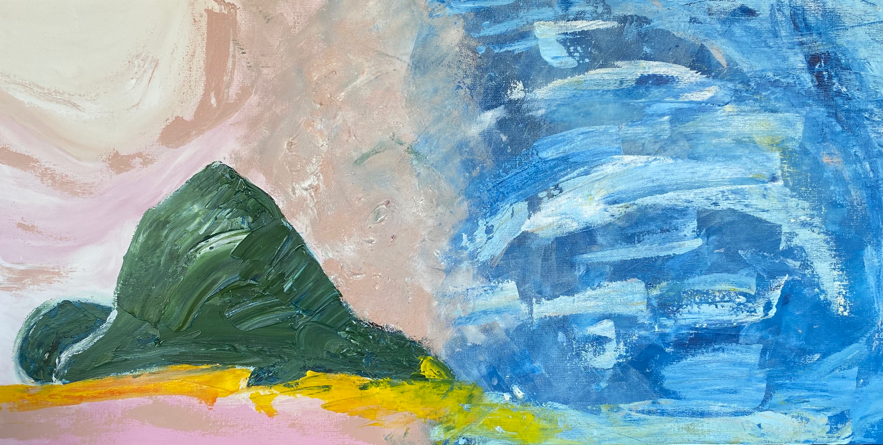
Acrylic, watercolour and gel medium on high density weave canvas
91.4cm (w) x 45.7cm (l)
Dusk settling over a mountain, fading into a blue night sky. A thought pops into my head as I paint: ‘I think I want people to have high expectations of me’.
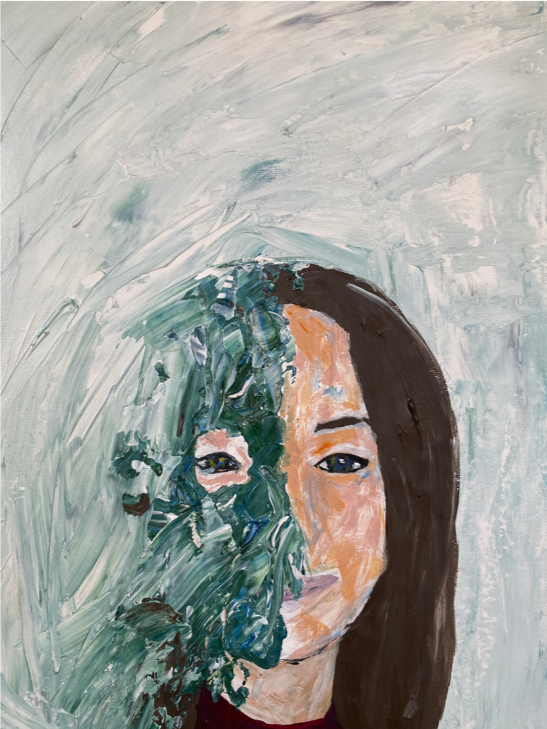
Acrylic, watercolour and gel medium on high density weave canvas
40.6cm x 50.8 cm
A mask covers half of my face and joins with the background. “I do not want the mask to be fixed; I want it to be interchangeable.”
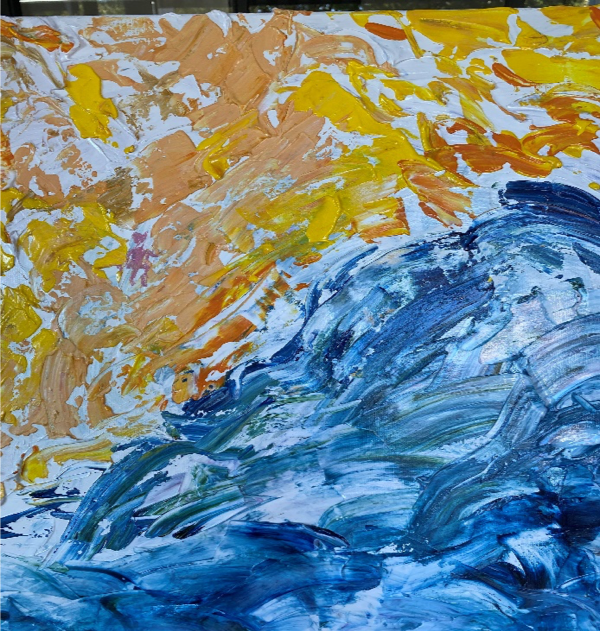
Acrylic, watercolour and gel medium on high density weave canvas
40.6cm x 50.8 cm
The ocean: overwhelming blue water and the feeling of nostalgia and anticipation as I stand safely on the sand. I am struck by the familiar feeling of being afraid.
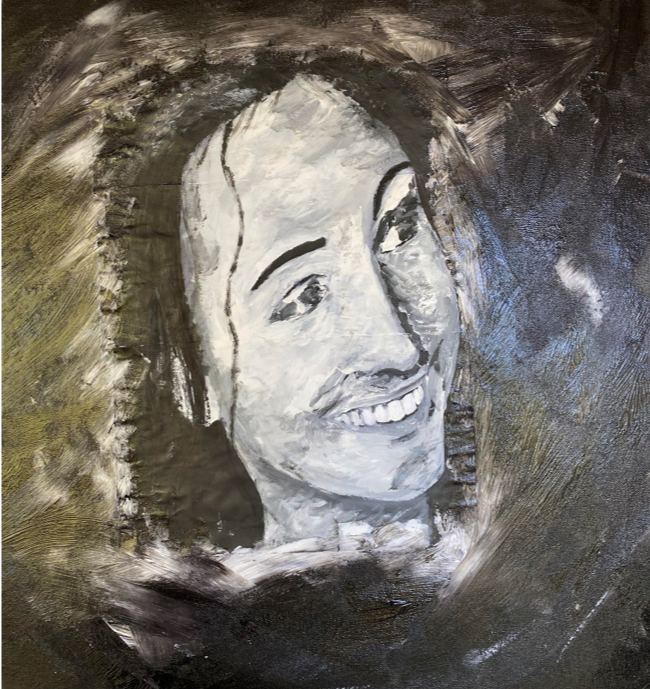
Acrylic, watercolour and gel medium on high density weave canvas
60.9cm x 60.9cm
‘I use my hands and my hands are coated in black… I like the feeling of paint on my hands’. ‘A cathartic release’.
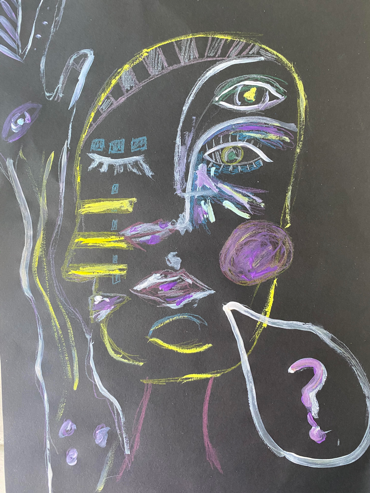
Acrylic, and coloured pencils on black A3 Paper
29.7cm x 42 cm
The mystery of what is to come, a scramble of quick arm movements with the only coherent thought being a question mark?
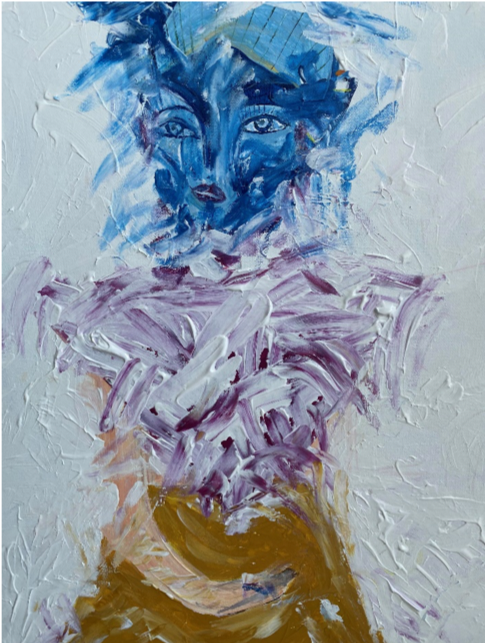
Acrylic, watercolour and gel medium on high density weave canvas
40.6cm x 50.8 cm
White paint smothered on by fingers – hiding words and images underneath that weren’t quite ready to emerge yet.
